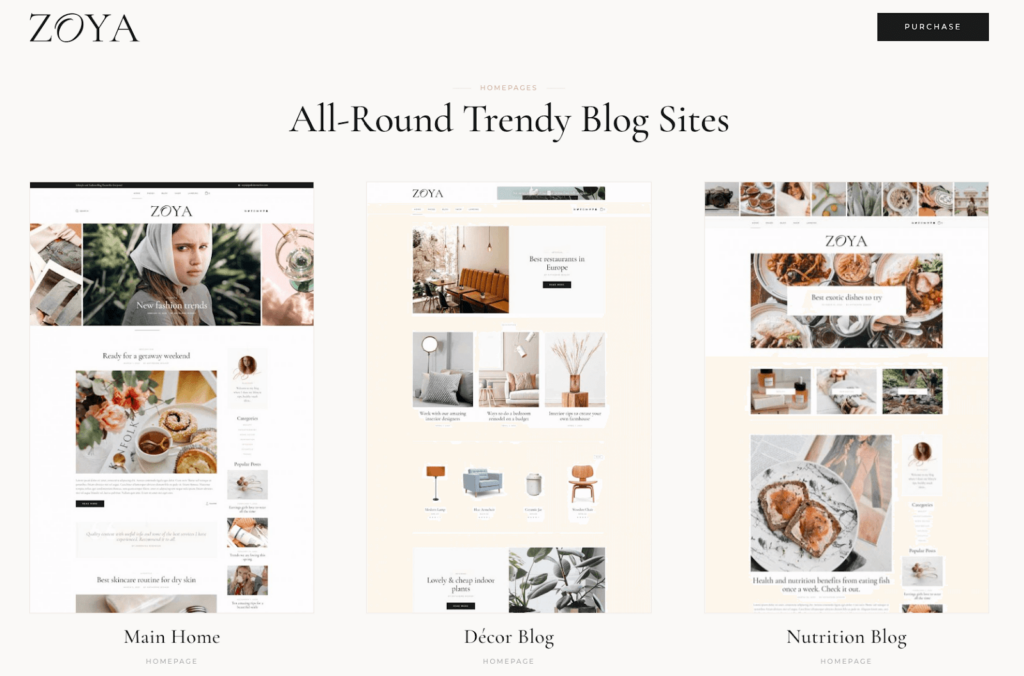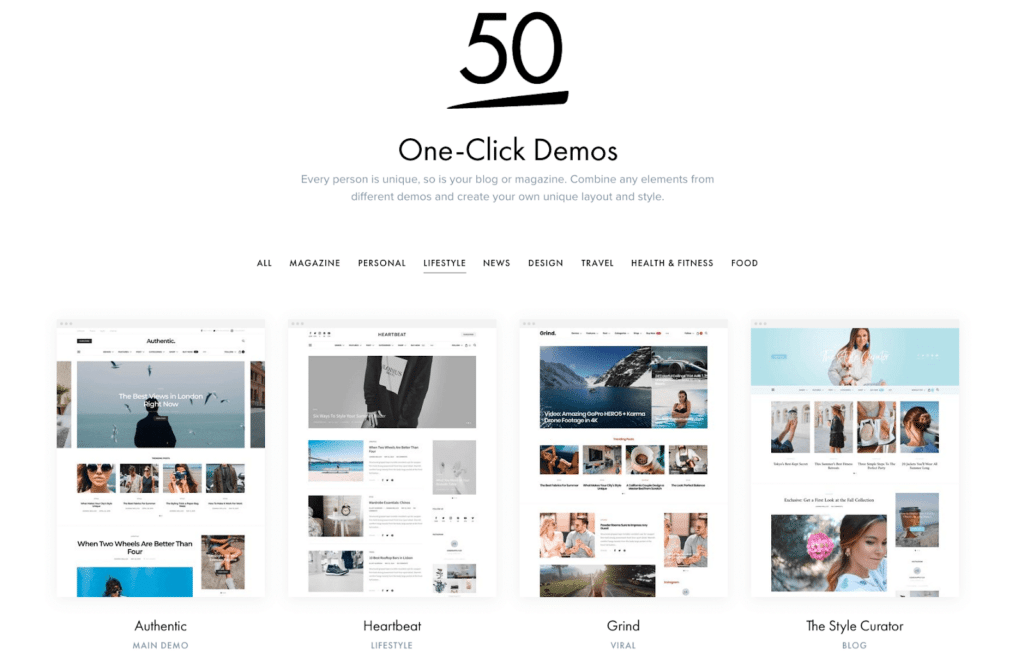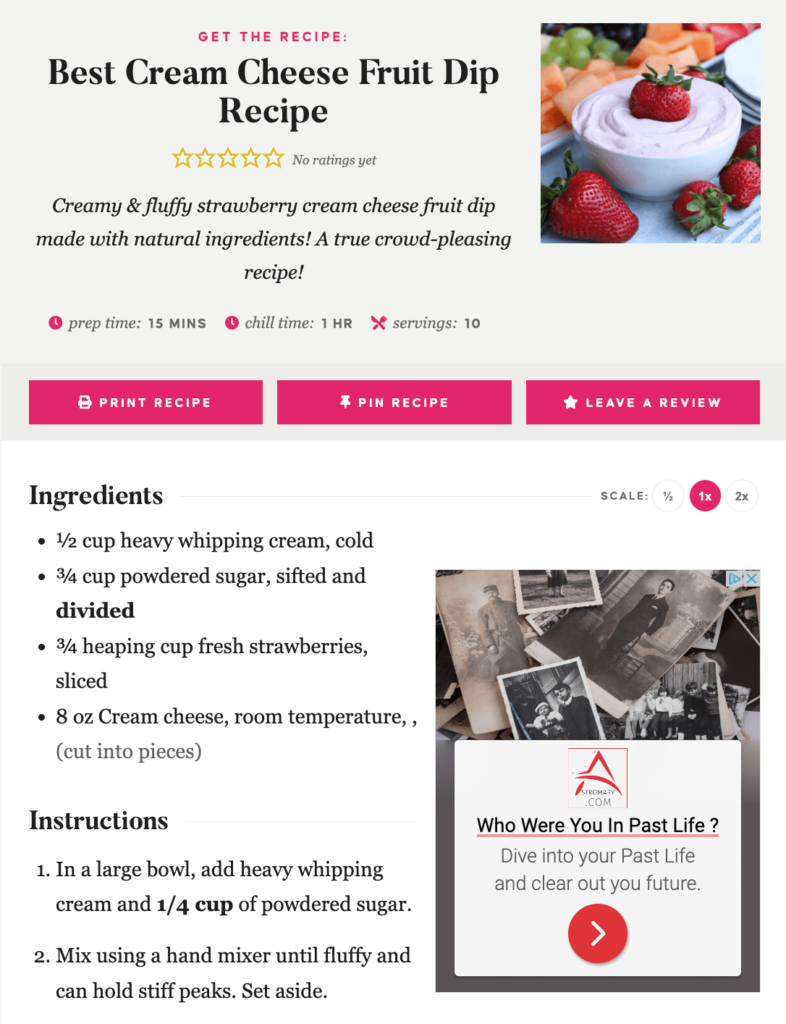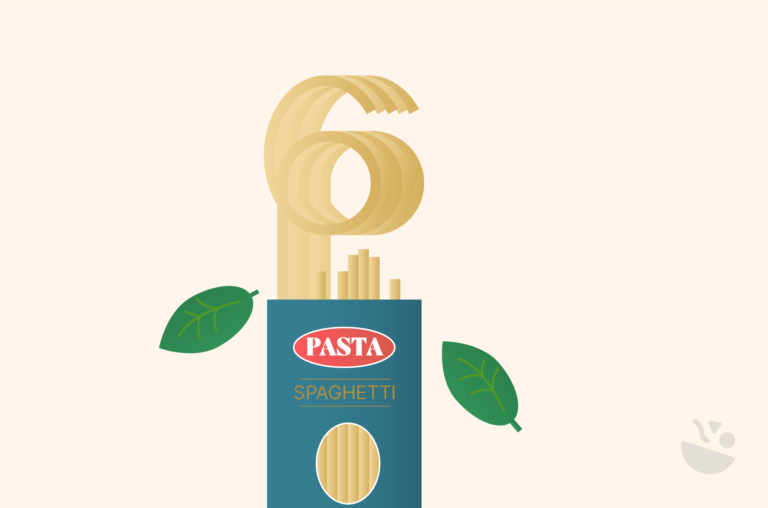Are you looking to monetize your hobbies through blogging? Imagine being able to delve into your passions, foster meaningful connections with like-minded enthusiasts across the globe, and potentially generate income from your expertise.
That’s not a dream, but the exciting reality of lifestyle blogging! This comprehensive guide is crafted to navigate you through every significant step of creating a dynamic and rewarding lifestyle blog.
From pinpointing your niche to exploring monetization opportunities, we’ve got your journey covered.
Ready? Let’s dive into the world of lifestyle blogging!
What is a lifestyle blog?
A lifestyle blog is a digital platform that allows writers to share their passions and life experiences with their audience. Readers uncover aspects of the blogger’s life, finding inspiration and garnering useful tips from the blogger’s shared tales.
Successful lifestyle bloggers often also spread their influence across multiple platforms, including social media and email newsletters. For instance, bloggers may preview upcoming blog content on Instagram stories or deliver exclusive content to their audience via tailored email newsletters.
The essence of lifestyle blogging is embedded in the flexibility it presents. Due to the non-specific niche nature of lifestyle blogs, they inherently cater to diverse interests, making them inclusive. They offer insights into various topics such as food, fashion, home décor, travel, do-it-yourself (DIY) projects, gardening, crafting, career, parenting, and relationships, among others.
Discover seven inspiring examples of lifestyle blogs
Starting a lifestyle blog and searching for some inspiration to guide you? Explore these seven well-loved lifestyle blogs that have beautifully mastered the art of sharing life’s highlights and day-to-day intricacies. Each blog serves as a delightful source of inspiration, reflecting the unique passion and perspective of the creator.
- Cup of Jo: A treasure trove of engaging content on an array of topics, including food, travel, and parenting.
- A Beautiful Mess: A colorful canvas of DIY, food, and decor ideas crafted meticulously by two creative sisters.

- Life with Tanay: With honesty and warmth, Tanay shares intimate snippets of her life as a mom in New York, offering uplifting insights on parenting, lifestyle, and travel.
- By SHnordic: Experience the Scandinavian lifestyle in its purest form, showcasing crisp and minimalist design inspiration for home decor.

- Wit & Delight: Kate Arends offers an enticing mix of interiors, style, and mental health conversations.
- The Defined Dish: For those with a health-conscious palate, this blog serves Whole30-approved recipes that fuse health with taste without compromise.

- He Spoke Style: With Brian Sacawa, you can expect a curated blend of fashion, style, and travel, serenaded with a classy aesthetic.
How to start a lifestyle blog: A step-by-step guide for beginners
Do you aspire to transform your passions into a creative and profitable venture? Then you’re in the right place!
In this tutorial, we’ll navigate you through the process of kick-starting your lifestyle blog, setting you on a path where your blogging dreams can thrive.
Step 1: Find your niche
The first step to creating a genuine lifestyle blog is to figure out what your motivation is for starting one. You can start by asking yourself these questions:
- Are you looking to forge connections with those who share your interests?
- Are you eager to unleash your creative potential and challenge yourself?
- Are you aiming to build a lucrative side hustle or a whole new business?
Knowing what your goal is makes it so much easier to pinpoint the type of content you’re going to create in your new blog.
Next, reflect on the hobbies, experiences, or interests that you’re excited to share with others. Your distinction and passion for your chosen subjects can be a powerful magnet, drawing readers to your blog.
For instance, if you’ve perfected delicious recipes for air fryer doughnuts, a food blog could potentially weave together your enthusiasm for baking with handy tips for air fryer users, thereby nurturing a distinctive niche.
Whatever you choose, make sure it’s genuine and that you’re being 100% authentic. The idea of a lifestyle blog is to connect and relate with the person who’s posting, and that can only happen if you’re being honest with your readers and yourself.
Keep in mind that finding the perfect niche for your blog can take some time. Maybe you’re lucky, and you’ll have it figured out in a week, but the most likely scenario is that you’ll have to experiment for some time before you find the best approach. Be patient and accepting of change.
Finally, give this little exercise a go: Try to define the main idea of your site in 10 words or less, and instead of just describing what it’s about, emphasize how the readers can benefit from it.
- Bad – “A blog about interiors and sustainability.”
- Great – “Elevate your home by embracing DIY”
Step 2: Choose a blogging platform and host
The next step is to choose a suitable blogging platform and hosting service. You’ve probably seen a lot of ads about free website builders that look tempting with their seemingly simple UI and website-building abilities.
However, if your goal is to monetize your blog and make this your full-time job, we recommend going for a self-hosted paid Content Management System (CMS) like WordPress. To make your blog user-friendly, this platform gives you the ability to fully customize it by adding useful plugins and attractive themes. As for monetization, the opportunities are endless. You can leverage ads, affiliate marketing options, and sponsored posts for additional revenue streams.
You also need to choose a robust and reliable web hosting service. Website builders like Wix and Squarespace come with their own packages where the hosting is tightly connected with the other features of the site. For example, the limited free version of Wix comes with 500MB of cloud storage and 500MB of bandwidth. To add more, you need to upgrade to the Premium version, which might add unnecessary features.
This is where WordPress comes at an advantage. The web hosting is entirely separate, and you can choose from multiple providers, such as Bluehost and Dreamhost.
Step 3: Choose a domain name
This part of the process requires some serious brainstorming. As one of the main components of a website, your domain name is extremely important for your blog’s success and branding identity. It’s how people can find you online and sets you apart from other less credible websites.
Be careful and take your time when choosing your name. If you’re having difficulties and your creative muscles are a bit worn out, you can try an AI domain name generator like Nameboy to help you out. It’s partnered with Bluehost, so it also automatically checks whether the name is available.
Your name should fulfill the following criteria:
- International: We recommend going for a domain that ends with .com as it’s easier to remember and suitable for international audiences.
- Unique: Originality here is essential as you don’t want to have the same or similar name to another brand.
- Memorable: This will make it easier for readers to recommend your blog to friends and find it again online even after some time.
- Easy to spell and pronounce: Simplicity is key here. You don’t want to confuse people, making it hard for them to discuss your blog or look for it.
- Short: If your name is too long, there’s more room for error when writing it down or spelling it out.
- Aligned to your brand: Every element of your website needs to be consistent with the overall brand message. Simply put, it must make sense for you to be called that.
- Evergreen: Don’t connect your name with current events, your location, or anything else that will trap it in a particular time frame. In 10–15 years, it still needs to make sense.
It’s important to note that your blog name and your domain name don’t have to be exactly the same, but should be close enough that they are recognizable as the same thing.
Step 4: Design your lifestyle blog
This is the best part: the design of your future blog. There are several options: hiring a web designer, going for one of the website builder themes, or installing a separate WordPress theme.
If you decide to go with the last option, you’re spoilt for choice. There is an endless supply of WordPress blog themes, no matter the topic of your website – be it design, food, or fashion. Two of our personal favorite lifestyle blog theme creators are Zoya by Mikado Themes and Authentic.


When thinking about the design of your blog, keep these factors in mind:
- Simplicity: Your design should focus on your content, not distract from it. A simple website will load faster, improving your search engine optimization (SEO) and user-friendliness.
- Mobile responsiveness: Mobile devices are currently the most significant website traffic source, so you must ensure that your website is as attractive and responsive on mobile as it is on a desktop.
- Brand alignment: Create a sense of harmony between all of the elements on the site. For example, the fonts on your blog pages should look good next to the fonts in your logo. If you have a social media profile, make sure that you transfer that brand identity there as well.
Step 5: Create your core pages
Every website must have core pages – it’s what people expect to see no matter where they go on the Internet. Building your core pages properly can help you establish authority and credibility right from the start. Here are some examples:
- The homepage: An introduction page that offers visitors an overview of the website’s content and purpose.
- Blog landing pages: Curated sections that categorize and showcase specific blog topics or series.
- Blog pages: Individual articles or posts detailing unique content, insights, or stories.
- The About Me page: A personal introduction highlighting your background, passions, and journey.
- The contact page: A dedicated space providing visitors with ways to reach out or engage with you.
Step 6: Enrich your blog with plugins
Transforming your lifestyle blog into an engaging, user-friendly platform has never been easier, thanks to the array of plugins available on WordPress – an impressive 60,000, in fact! Below, we delve into three stellar plugins for lifestyle blogging.
1. WP Recipe Maker
A significant chunk of lifestyle blogs share various tasty recipes, making WP Recipe Maker an invaluable ally. This versatile platform will augment the display of your recipes, be it showcasing culinary masterpieces, sharing dietary tips, or broadcasting your homemade creations.
Noteworthy features WP Recipe Maker offers include a template editor, printing options, and recipe metadata. It also lets you add instructional images and videos to increase the visual appeal of your recipes.
When you enter the advanced realm of premium bundles, expect an array of additions. User ratings, ingredient links to facilitate content monetization through affiliate programs, nutritional labels, kitchen timers, and advanced adjustable settings await you.
WP Recipe Maker’s primary allure is how it simplifies creating and managing recipes on your blog.
Below are a few lifestyle blogs making excellent use of WP Recipe Maker:



2. ShopR
ShopR revolutionizes the process of exhibiting shoppable content on your lifestyle blog. With the help of this plugin, you can craft a Shop the Post widget for your blog posts. This spark of interest can inspire your readers to peruse through some of the items featured in your blog, potentially leading to purchases through your affiliate links.
ShopR doesn’t halt at just functionality. You can customize the entire widget aesthetic to ensure it aligns with your brand. For instance, you can tailor the widget’s color palette to resonate with your brand’s design scheme or choose fonts that reflect your brand’s voice.
3. Smash Balloon Social Photo Feed
Smash Balloon Social Photo Feed is an exceptional plugin that displays your Instagram feed on your lifestyle blog, opening a world of opportunities for site engagement and growing your social following.
Your embedded Instagram feed can be designed to your precise specifications – tweak the dimensions, number of photos, image size, background color, image spacing, and more to get just the look you desire. This seamless integration helps enrich your blog’s visual appeal while retaining the cohesive brand aesthetic.
4. WP Super Cache
WP Super Cache is a free plugin that can improve your overall website speed by caching content and offering static HyperText Markup Language (HTML) files to certain users. This includes but is not limited to people who:
- Are not logged in.
- Have never left a comment on any of your blog posts.
- Have not viewed a post that is password-protected.
Any other users will receive tailored content according to their activity on your website. With this plugin, you can ensure a fast and enjoyable browsing experience for your readers.
5. MonsterInsights
Another handy WordPress plugin is MonsterInsights. It integrates with Google Analytics to offer an in-platform analytics dashboard that can give you essential insights about blog traffic, page views, and Click-Through Rates (CTR). You can also combine this plugin with WP Recipe Maker to track affiliate marketing links in recipe cards and related purchases.
The reports are user-friendly and much easier to decipher than Google Analytics, which makes it a perfect tool for novice bloggers.
Step 7. Plan your content
Lifestyle blogging is all about being authentic and creative, but it also requires a lot of planning.
Here is what you need to do:
Brainstorm content ideas
Jot down a spectrum of content ideas, emphasizing those that synchronize with your blog niche and reverberate with your intended readers. Let your passions lead the way; what topics make your heart race with excitement? It’s in these subjects where your most compelling content lies.
Look to other blogs for inspiration
Broaden your horizons by seeking inspiration from other blogs. They might be from a different niche, but creativity knows no bounds. Websites offering roundups of blog post ideas can also be treasure troves of inspiration. Just make sure that you don’t directly copy specific ideas or plagiarize content.
Conduct market research
Market research, contrary to popular belief, doesn’t always involve boardroom meetings or fancy software. With tools like KW Finder and Google Keyword Planner, you can easily discern what topics your potential readers are curious about. Engage with your social media audience, or even start a conversation in a WhatsApp group of your target demographic to gather insights.
Consider a content series
Contemplating a series of related posts? This can be a game-changer. Not only does it offer consistency, but it also provides a familiar touchpoint for your readers. An example of a content series is a collection of seasonal recipes that include certain vegetables or are related to a particular holiday – Christmas, Chinese New Year, Ramadan, and similar.
Add intriguing visuals
Content is not limited to just words; it’s a blend of text, images, graphics, and sometimes even videos. Intriguing visuals play a pivotal role in capturing your readers’ attention and enhancing your blog’s overall appeal. For example, if you’re a food blogger, adding video instructions to recipes can be helpful for people trying to follow along.
Create a content calendar
Streamline your content planning with a tool like Trello, which can assist in idea organization and deadline management. As you grow and start getting feedback from your readers, analytics will give you insights into your most-loved posts, allowing you to tailor your content strategy even further.
Step 8: Start creating content!
Celebrate your achievements and prepare yourself to take the next step: creating and publishing content on your lifestyle blog. One thing to remember is that becoming a successful lifestyle blogger does not necessarily require exceptional writing skills. Instead, it’s about crafting relatable, engaging content.
Begin by structuring your posts by creating an outline highlighting the key sections and points you want to cover. When crafting content becomes challenging, don’t hesitate to utilize digital tools for support. For instance, Grammarly can be your virtual proofreader, while AI-based tools like ChatGPT could help generate catchy titles.
Consider visuals as an integral part of your content strategy. Decide whether you’ll feature original photography or leverage high-quality images from free stock photography sites like Unsplash. Compelling visuals can enrich your written content regardless of the source and sustain your readers’ attention.
Maintain consistency in your blog posts by adhering to a checklist. Essentials to account for include spell checking, related images, internal links, and incorporating SEO elements like meta descriptions.
Step 9: Promote your blog
Having published your first posts, it’s time to shift your focus towards publicizing them across various channels to build your readership.
A few favored methods include:
- Sharing your blog posts on social media platforms that correspond with your niche and attract your target audience.
- Incorporating email marketing strategies, like developing an email list to send engaging newsletters out to your subscribers.
- Connecting with other bloggers, influencers, and enthusiasts within your niche to broaden your blog’s exposure.
- Guest posting on other websites to concurrently heighten your networking circles and visibility.
- Ensuring you have an SEO strategy for your blog that includes regularly updating and refreshing older content, building backlinks, and closely monitoring your website’s performance.
- Nurturing community interaction through responding to comments on your blog and engaging in conversations on your social media platforms.
Step 10: Monetize your blog
Building a resilient lifestyle blog certainly requires time and effort, but it can turn into a sustainable source of income as well. The key is to weave in monetization strategies authentically and in harmony with your blog’s content and audience.
- Sponsored content: This usually includes undertaking collaborations with a brand on a specific product range, for example, reviewing a new kitchen utensil set.
- Affiliate marketing: Earn a commission every time readers make a purchase using an affiliate link. Plugins like WP Recipe Maker simplify this process by allowing easy insertion of affiliate links in your recipe ingredients and equipment list.

- Ad revenue: Incorporating ads on your blog can also contribute to a steady revenue stream. With plugins like WP Recipe Maker, you have the convenience of displaying ads within your recipes – making the advertisement less intrusive and more organic.
- Product sales: Sell customized products or merchandise by turning your WordPress site into a shop with WooCommerce – a user-friendly integration that can help you grow as a business. Here is how one of WP Recipe Maker’s clients – The Minimalist Baker, combines their recipe blog with a custom shop to promote a digital cooking book and other items.

- Consulting: Offer consulting or coaching services based on your expertise. For example, if you own a health blog, you can offer yoga or stretching classes to interested readers.
- Guest blogging: Writing guest articles for other blogs in your niche will help you build credibility and increase your network of bloggers. Guest blogging is also used for building backlinks, which are essential for SEO.
- Subscription-based models: Many lifestyle bloggers also pioneer in offering premium content where readers pay a monthly fee to unlock exclusive content.
- Donations: Inviting readers to financially support your work through platforms like Patreon or Ko-fi and accepting donations with WooCommerce as a product are other ways of monetizing your blog, especially if you plan to sell physical products.
What do successful lifestyle blogs have in common?
Lifestyle blogs, indeed, are one of the most common types of blogs you can find online, each aiming to share a slice of life, advice, or experiences. However, it’s evident that not all blogs receive widespread recognition and success.
So, what differentiates the triumphant from the rest? What do the best lifestyle blogs have echoing through their pages?
Let’s delve deep into the ingredients of a successful lifestyle blog cocktail.
- A unique perspective: The realm of lifestyle blogging is vast, but those that stand out usually have a distinct voice. Infusing personality into blog posts not only showcases authenticity but also fosters a real connection with readers.
- High-quality content: With so many options available, readers gravitate towards compelling narratives. As a blogger, if you wouldn’t pause to read your content, chances are, others won’t either.
- A focus on aesthetics: A picture speaks a thousand words, and in the world of lifestyle blogging, it’s often the visuals that draw readers in. Be it crisp photos, engaging videos, or sleek graphics, visuals augment the storytelling process and amplify content shareability.
- Community engagement: Successful bloggers don’t just broadcast; they converse. Engaging with the community, replying to comments, and being active on social platforms can weave a tight-knit digital family around the blog.
- Established niche: While a lifestyle blog can cover a spectrum of topics, having a defined niche can cater to a specific audience, making content more tailored and relevant.
- Authenticity: Trust is the cornerstone of any relationship, including that between a blogger and readers. Authentic content, devoid of overt sales pitches, resonates more deeply with an audience.
- Consistency: Whether it’s daily, weekly, or monthly, maintaining a regular posting rhythm keeps readers hooked and coming back for more.
- Search engine optimization: Visibility is key. By employing SEO techniques or leveraging plugins, bloggers ensure their content reaches its intended audience.
- Data analysis: Comprehending blog performance through analytics paves the way for refinement, enabling bloggers to cater better to their audience’s preferences.
- The ability to evolve: Trends ebb and flow, and what’s en vogue today might be passé tomorrow. Adapting to shifts, both in terms of content and platform, keeps a blog fresh and relevant.
Lifestyle blogging made easy with WP Recipe Maker
Together, we’ve journeyed through the fascinating world of lifestyle blogging – from finding the perfect niche and name to designing an attractive blog and creating engaging content. We’ve explored the process of starting a lifestyle blog, including effortlessly posting your first lifestyle recipe using WP Recipe Maker.
Elevating your lifestyle blog has never been easier with WP Recipe Maker. Whether you’re a food aficionado sharing culinary insights, a fitness enthusiast posting nutrition-packed recipes, or a travel guru chronicling your food journeys, WP Recipe Maker caters to your every need and enriches your reader experience.
Why wait? Upgrade your lifestyle blog today and start creating beautiful and engaging recipe posts with WP Recipe Maker!






